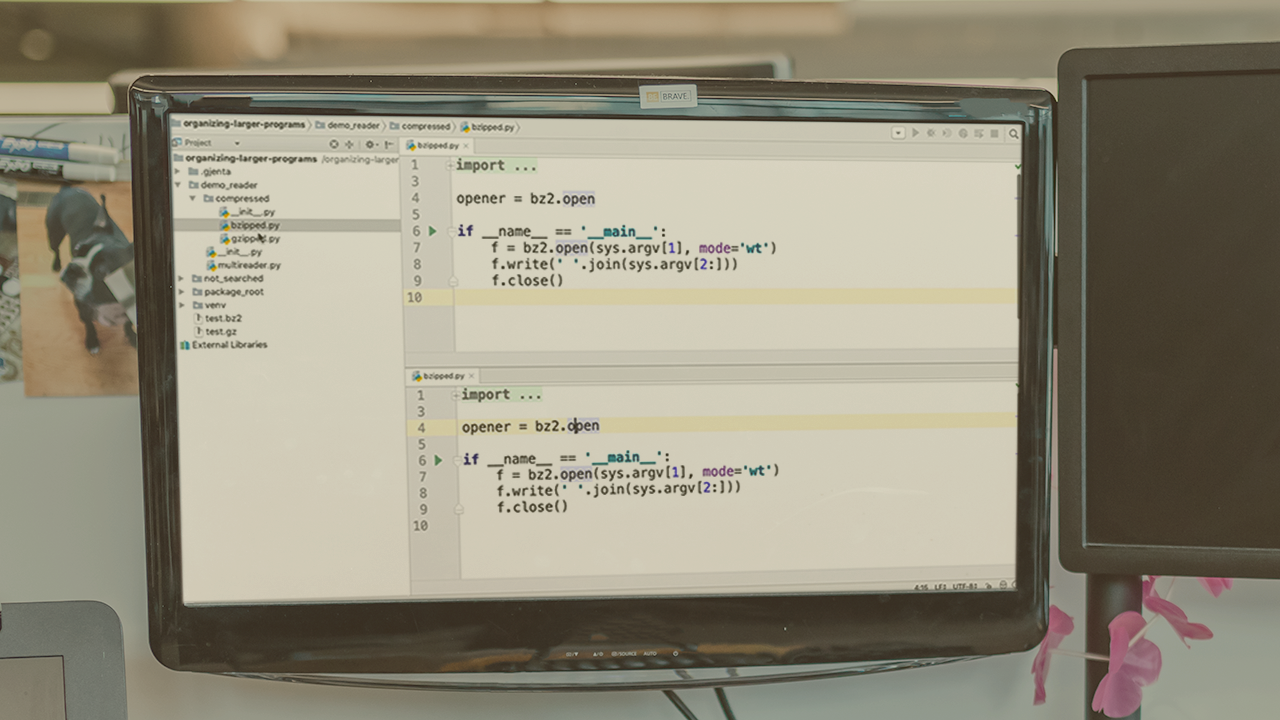- Course
Core Python 3: Organizing Larger Programs
This course is an introduction to features of the Python language which will help you structure your code once your needs move beyond a few Python modules. You'll learn where to start plus the patterns you should follow to grow your Python projects.

- Course
Core Python 3: Organizing Larger Programs
This course is an introduction to features of the Python language which will help you structure your code once your needs move beyond a few Python modules. You'll learn where to start plus the patterns you should follow to grow your Python projects.
Get started today
Access this course and other top-rated tech content with one of our business plans.
Try this course for free
Access this course and other top-rated tech content with one of our individual plans.
This course is included in the libraries shown below:
- Core Tech
What you'll learn
As your Python programs grow, or you contribute to existing, larger Python-based systems, you'll need some techniques to help you manage the inevitable growth of complexity. In this course, Core Python 3: Organizing Larger Programs, you’ll learn foundational knowledge to structure your Python programs to facilitate their growth and maintenance. First, you'll learn how to implement packages. Next, you'll discover namespace and executable packages. Finally, you'll explore a structure for your projects that support everything from code to tests to documentation. When you’re finished with this course, you’ll have the skills and knowledge of Python program organization needed to grow and nurture your Python projects.

